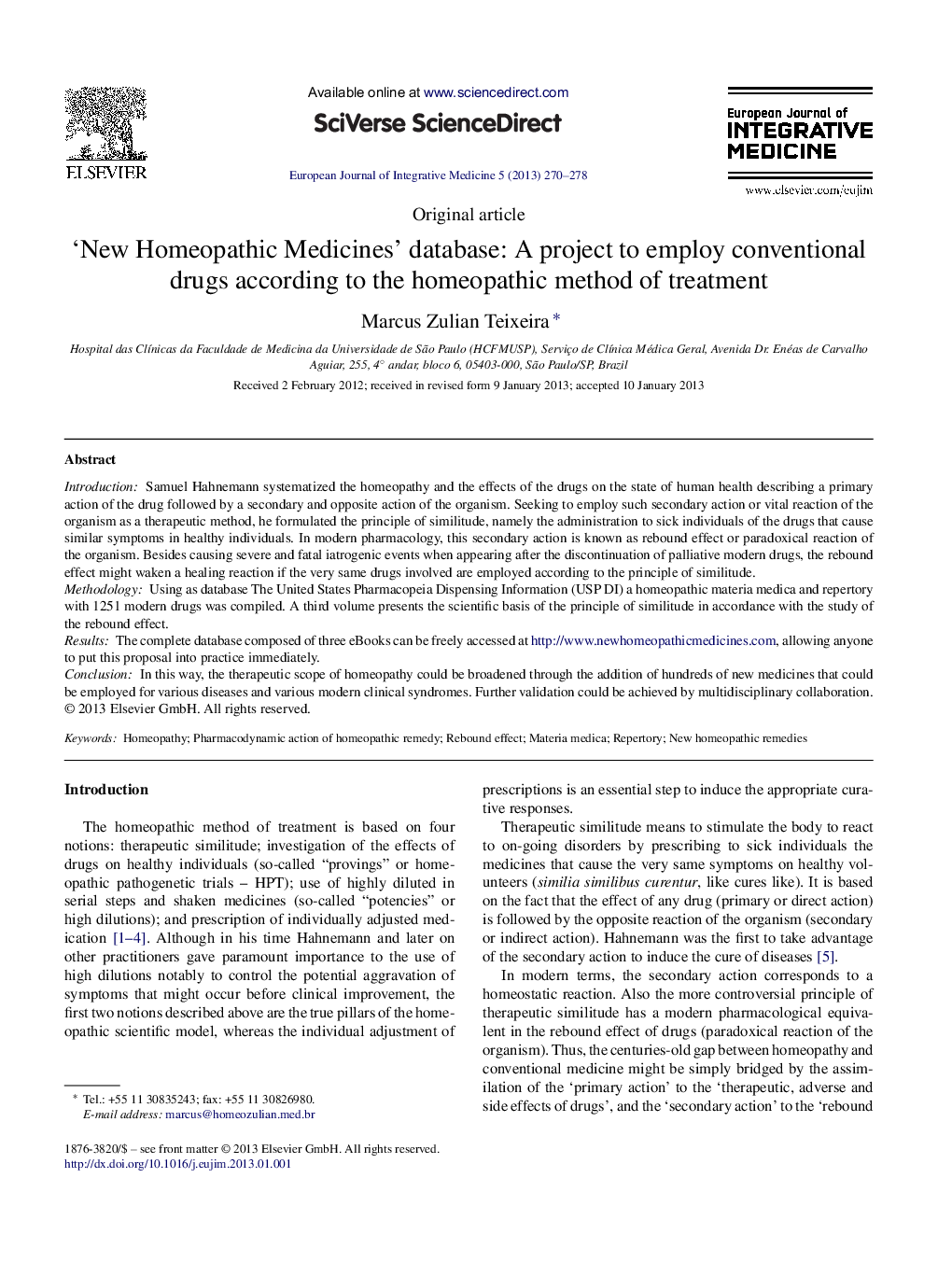| Article ID | Journal | Published Year | Pages | File Type |
|---|---|---|---|---|
| 5808152 | European Journal of Integrative Medicine | 2013 | 9 Pages |
IntroductionSamuel Hahnemann systematized the homeopathy and the effects of the drugs on the state of human health describing a primary action of the drug followed by a secondary and opposite action of the organism. Seeking to employ such secondary action or vital reaction of the organism as a therapeutic method, he formulated the principle of similitude, namely the administration to sick individuals of the drugs that cause similar symptoms in healthy individuals. In modern pharmacology, this secondary action is known as rebound effect or paradoxical reaction of the organism. Besides causing severe and fatal iatrogenic events when appearing after the discontinuation of palliative modern drugs, the rebound effect might waken a healing reaction if the very same drugs involved are employed according to the principle of similitude.MethodologyUsing as database The United States Pharmacopeia Dispensing Information (USP DI) a homeopathic materia medica and repertory with 1251 modern drugs was compiled. A third volume presents the scientific basis of the principle of similitude in accordance with the study of the rebound effect.ResultsThe complete database composed of three eBooks can be freely accessed at http://www.newhomeopathicmedicines.com, allowing anyone to put this proposal into practice immediately.ConclusionIn this way, the therapeutic scope of homeopathy could be broadened through the addition of hundreds of new medicines that could be employed for various diseases and various modern clinical syndromes. Further validation could be achieved by multidisciplinary collaboration.
